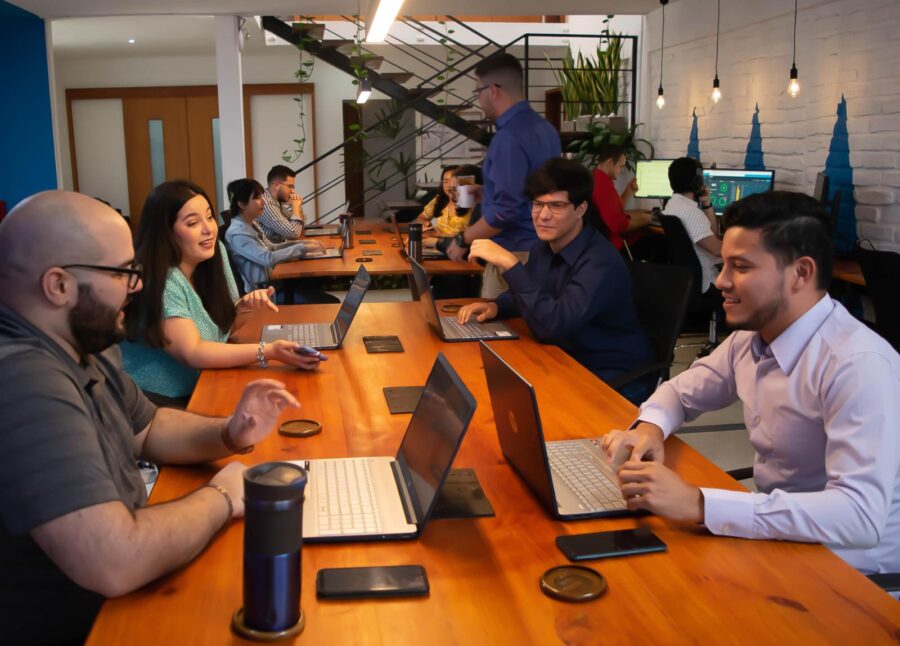Every day we struggle with something; stress from work, bills to pay, or life in general. And, as we all know, the important part is not the problems we face, but how we overcome them.
Moving forward in life is like a choice. Even though it is not as simple as deciding to keep going and everything magically falling into place, rather, having the will to do it is just the first step. Choosing to move forward is what drives you to find ways to do it, even if the path needed is to find help to do it.
So, why does this matter to a company? Well… as you might know, the well-being of your team tends to equal the success of your company, and taking into consideration that most people tend to find stressors or burnout at work, it is important for you to try and promote resilience.
And you may ask…
What is resilience?
The American Psychological Association (APA) defines resilience as the process of adapting well in the face of adversity, trauma, tragedy, threats, or significant sources of stress; also saying that as much as resilience involves “bouncing back” from these difficult experiences, it can also involve profound personal growth.
So, we could say, it is about overcoming the negative and making more room to experience the positive. Being resilient is like when you fall, scratch your knee, and get right up, clean yourself, and keep on going with an open heart, even though you have fallen before. It is about evolving and adapting to an environment, where there might be struggles. Therefore, it is something very important to have nowadays.
So, how can we cultivate it?
Like any skill, resilience can be developed and trained through your thoughts and behaviors. As paradoxically as it may sound, a little structure can help you adapt to new situations.

Things like having a consistent sleeping schedule will give you the rest that you need to be at your best in every situation; a morning routine to help you set your mindset can predispose you to accept changes, to face what may come; and planning ways to proceed if something goes wrong could be helpful to respond quickly in front of new situations, to come up with new ways to answer a problem, to be creative in front of the adversity.
Embracing healthy thoughts is a great way to develop resilience. Using the past as a source of lessons to learn, other than something we wish to change. Accepting the fact that life is dynamic, and, therefore is always changing. Being hopeful about the future and putting things into perspective will make a huge difference.
There is also a great exercise that people at Google use on a daily basis to keep their resilient focus and avoid burnout.
This exercise is called:
T.E.A. Check-in
This is an exercise that will help you be aware of your thoughts, energy, and attention. It is a self-check you can do multiple times during the day to help you refocus on what is truly important at the moment. Imagine you are at work and you take a coffee break, while you are at it, you take a moment and check your tea, so you get back to work with a fresh mindset and ready to do your best.
How to do it? It is pretty simple…
Thoughts (T)
To be aware of your inner dialog you can ask yourself two main questions by finishing up these sentences:
- Today my mind is… (And, where is your mind? Is this headspace helping you throughout the day? What can you do to focus on useful and helpful thoughts?)
- To refocus I need to… (What helps you refocus? Is there someone, something, or someplace that helps you recenter?)
This matters because the way you talk to yourself has an impact on you, by doing this check-up you can point out some thinking patterns, look deeply into them to know which ones are useful and help you be more productive, and intentionally use these patterns, so they will have a positive influence on your attitudes and behavior.
Thoughts are the prime source of many things, projects, dreams, attitudes, and even some feelings, so it is vital to be aware of what we are thinking, and the way we do it. Sometimes, thoughts need a little reframing to go from having a negative to a positive impact, making awareness a key to success.
Energy (E)

Knowing when and how to invest your energy can be challenging, but intentionally choosing what to do with it can be easier by saying:
- Today my energy is… (What needs more of your energy during the day? What time of the day do you feel more energetic, can you do that important task at that energetic moment of the day?)
- To change or maintain, I need to… (What recharges you? What drains you, and how can you minimize its impact on you?)
Energy, being aware of your emotions is very important, somedays you might be feeling like the king of the world, and being aware of it might help you channel that energy into something that requires a lot of enthusiasm; some other days you might be less motivated and knowing yourself and how you can recharge can be what keeps you from burning out.
It’s a resource that must be used wisely, at some moments the smart thing to do is to invest in yourself, to recover, and have more energy; at other times this could help you know when to accept new challenges and intentionally give the best you have.
Attention (A)
This step is all about priorities, you choose where to focus the most during the day, by telling yourself:
- To be my best today, I will focus on doing or being… (What deserves most of your attention today? What could steal your attention, and how can you minimize it? What helps you refocus your attention?)
Attention is like a spotlight, it highlights something and for a moment it can look like that is the only thing there. If you put your attention on something, it will be the only thing that matters for a moment.
Let’s think about this scenario to illustrate this idea: you are looking at a white wall and there is a red dot in the center, you focus on the red dot and that’s what you see, the rest of the wall is not on your mind because it doesn’t have your attention. It is very easy to shift your attention from place to place, but being aware of where are you placing it is what will help you maintain it where you intentionally want it to be.
Every day we face challenges, it is easy to get overwhelmed, so cultivating resilience, and knowing yourself is a tool that comes very much in handy. A great way to develop these tools is to make them part of your routine, and make them a habit, so why don’t you try integrating some T.E.A. check-in into your day?







